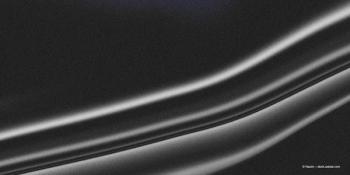
What a proposed biosimilar may mean for subfoveal wet AMD
Prospective randomized trial demonstrates clinical equivalence of biosimilar and reference ranibizumab
This article was reviewed by Frank G. Holz, MD.
A proposed biosimilar to ranibizumab (FYB201, bioeq) demonstrated similar clinical efficacy, safety, and immunogenicity as a treatment for newly diagnosed subfoveal neovascular age-related macular degeneration (AMD) compared with reference ranibizumab (Lucentis, Roche/Genentech), said Frank G. Holz, MD.
Outcomes of patients treated with the reference ranibizumab and biosimilar were investigated in the prospective COLUMBUS-AMD trial. Holz presented the research at the 2020 virtual meeting of the American Academy of Ophthalmology.
“Biosimilars are less-expensive alternatives to reference biologic medicines. To receive marketing approval, biosimilars need to undergo comprehensive studies demonstrating high similarity with the reference biologic in all critical quality attributes, including physical, chemical, and biological properties,” said Holz, professor and chair, Department of Ophthalmology, University of Bonn, Bonn, Germany.
“The COLUMBUS-AMD study investigated the clinical equivalence of the biosimilar candidate FYB201 and reference ranibizumab," Holz added. "The findings of this study demonstrated the biosimilarity of FYB201 and reference ranibizumab with regard to efficacy as well as safety in patients with newly diagnosed neovascular AMD. They suggest that FYB201 may offer a new, high-value treatment option for patients with neovascular AMD.”
COLUMBUS-AMD enrolled patients age 50 years and older with subfoveal or juxtafoveal choroidal neovascularization (CNV) with foveal-involving leakage related to the CNV activity. Eligible patients needed to have foveal center point (FCP) retinal thickness ≥350 µm on spectral-domain OCT, a total lesion area ≤12 MPS disc areas, total CNV area ≥50% of total lesion area, and BCVA between 20/32 and 20/100 in the study eye.
The patients were randomly assigned 1:1 to receive monthly intravitreal injections of FYB201 0.5 mg or reference ranibizumab 0.5 mg for up to 48 weeks. The primary endpoint was change from baseline BCVA after 8 weeks. Key secondary endpoints included change from baseline BCVA at 48 weeks and change from baseline FCP retinal thickness at 48 weeks, as well as safety and immunogenicity.
A total of 477 patients were randomized to the two treatment arms. The two groups were well balanced at baseline with respect to median age (76 years), gender distribution (~44% male), and distribution of BCVA.
The study met its primary endpoint, showing that the 90% confidence interval for the change from baseline in ETDRS BCVA after 8 weeks was within the predefined equivalence margin. The analysis of least squares mean change in BCVA showed improvements of 5.1 ETDRS letters in eyes treated with FYB201 and 5.4 ETDRS letters in eyes treated with reference ranibizumab. The least-squares mean difference between groups of study eyes was -0.4 ETDRS letters with a 90% confidence interval of -1.6 to 0.9 ETDRS letters; the predefined equivalence margin was -3.5 to 3.5 ETDRS letters. At all follow-up visits, mean study eye BCVA and mean change from baseline in study eye FCP retinal thickness were highly similar between the groups of eyes treated with FYB201 and reference ranibizumab.
The overall safety profiles were also highly similar for the two study groups. Rates of any adverse event, drug-related adverse events, and serious drug-related adverse events in the FYB201 group were 64.7%, 8.4%, and 1.3%, respectively; corresponding rates in the reference ranibizumab group were 69.9%, 10.5%, and 1.3%, respectively. All-cause treatment-emergent intraocular inflammation occurred in 8.4% of eyes in both groups; the rate of treatment-emergent intraocular inflammation considered related to the investigational medicinal product was 0.8% in both groups. The types of ocular adverse events occurring in the two treatment groups were also similar, and most adverse events in both groups were mild or moderate in severity.
“No clinically relevant differences in safety profiles were identified between the treatment groups,” Holz said.
The immunogenicity analyses characterized the development of anti-drug antibodies and neutralizing antibodies and showed FYB201 and reference ranibizumab had comparable immunogenicity profiles. The rate of anti-drug antibody development was 5.9% in both treatment groups, and the ADA titers were also similar in the two groups. A single patient in the FYB201 group developed neutralizing antibodies between week 24 and week 48.
Frank G. Holz, MD
E: frank.holz@ukbonn.de
Holz receives research grants from bioeq/Formycon, and research grants, and honoraria for consultancy from Novartis (not related to the COLUMBUS-AMD study reported here).
Newsletter
Keep your retina practice on the forefront—subscribe for expert analysis and emerging trends in retinal disease management.












































